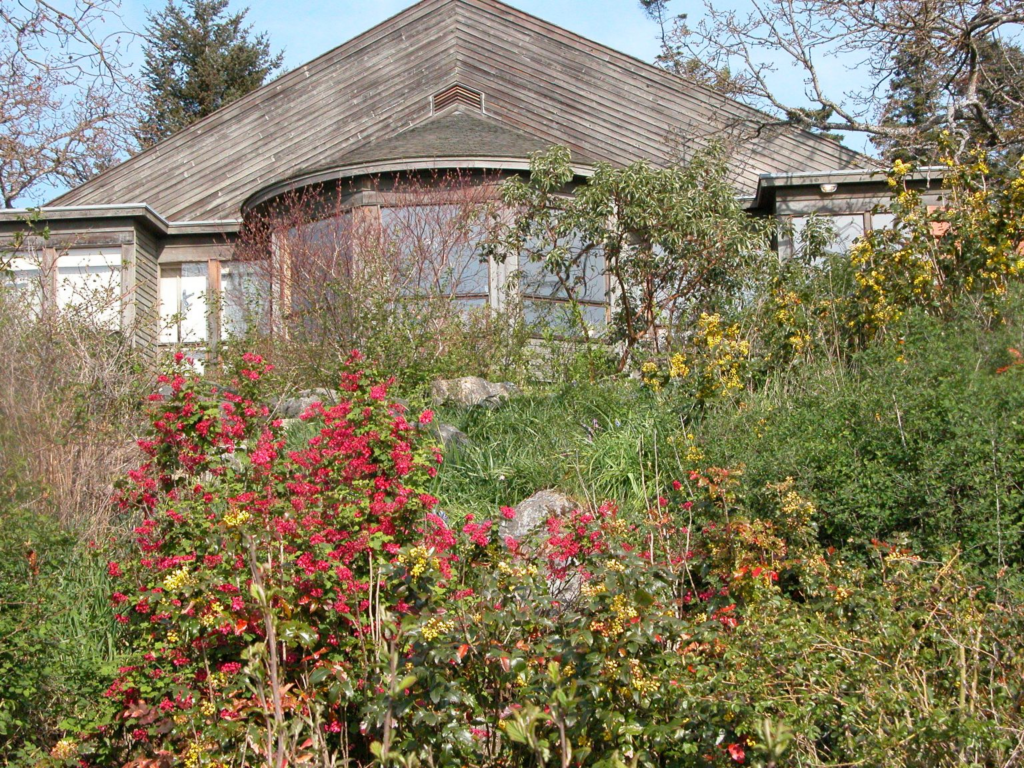Category: Free Inquiry
This is the category to apply to your Free Inquiry posts.
This week we went exploring at Pkols to harvest Stinging Nettle, or ȾEX,ȾEX in SENĆOŦEN.
References:
Barton, R. (2015). Medicinal plants of Vancouver Island: An introduction to the flora of the Northwest Coast. Vancouver Island University Press.
Turner, N. J., & Turner, K. L. (2008). The medicinal plants of Indigenous peoples of British Columbia. Botanical Medicine 15(2), 112-123.
This week I decided to make the whole post the video. However, the better quality videos would not load so the video available here is a lower quality than I would like it to be.
This week, I took a walk with my family at East Sooke Park for Family day. We went to the Aylard Farm entrance. East Sooke Park is on the unceded traditional territories of the T’Sou-ke and SC’IȺNEW Nations. This park is one of the most beautiful parks on the southern part of Vancouver Island. I didn’t see them this time, but I have seen whales multiple times here. The name SC’IȺNEW means “The Place of the Big Fish” and the name T’Sou-ke comes from the Stickleback fish that live in their area. There are many trails through East Sooke Park, some that may take you hours to complete.
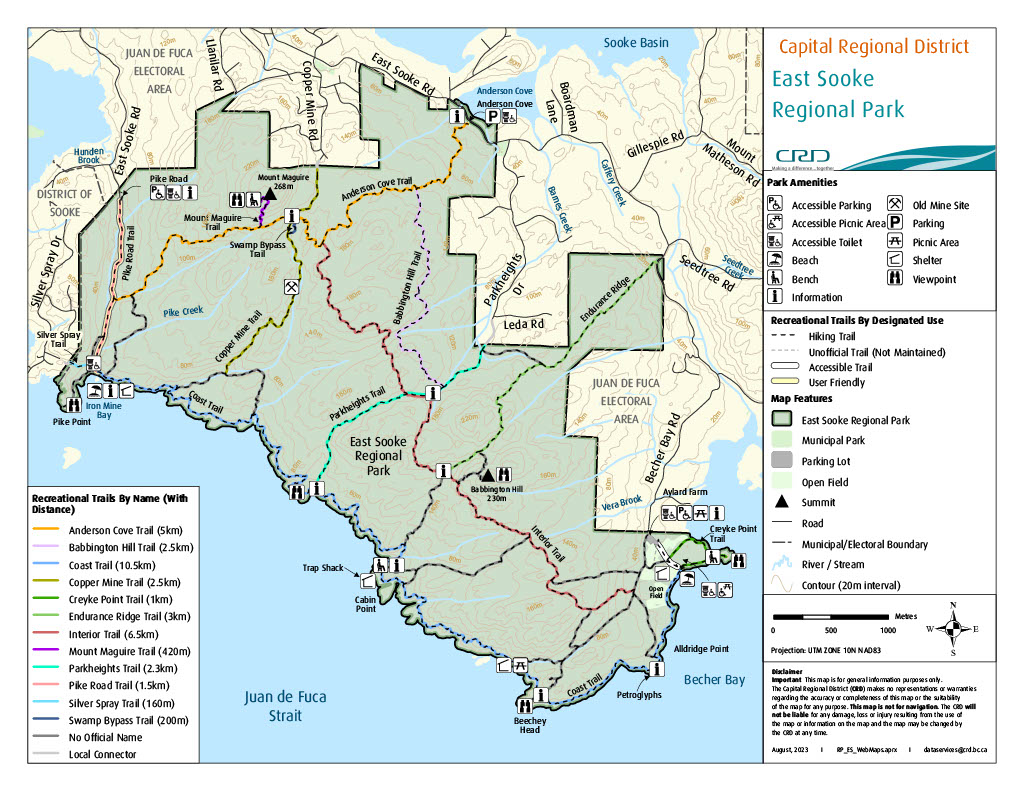
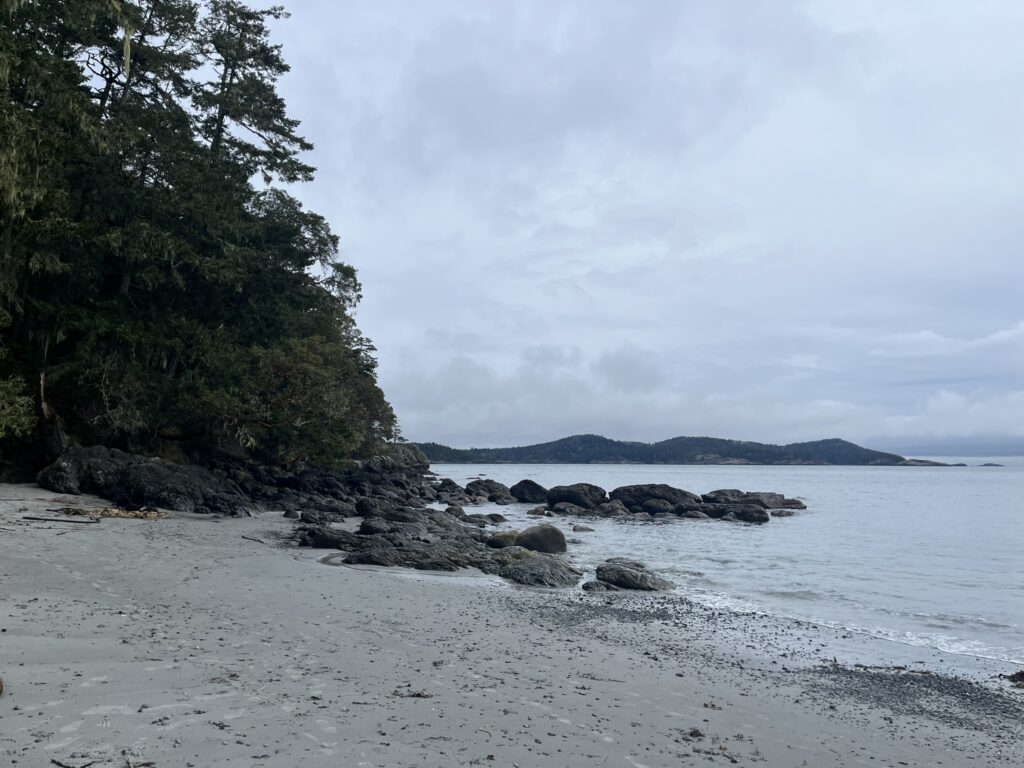
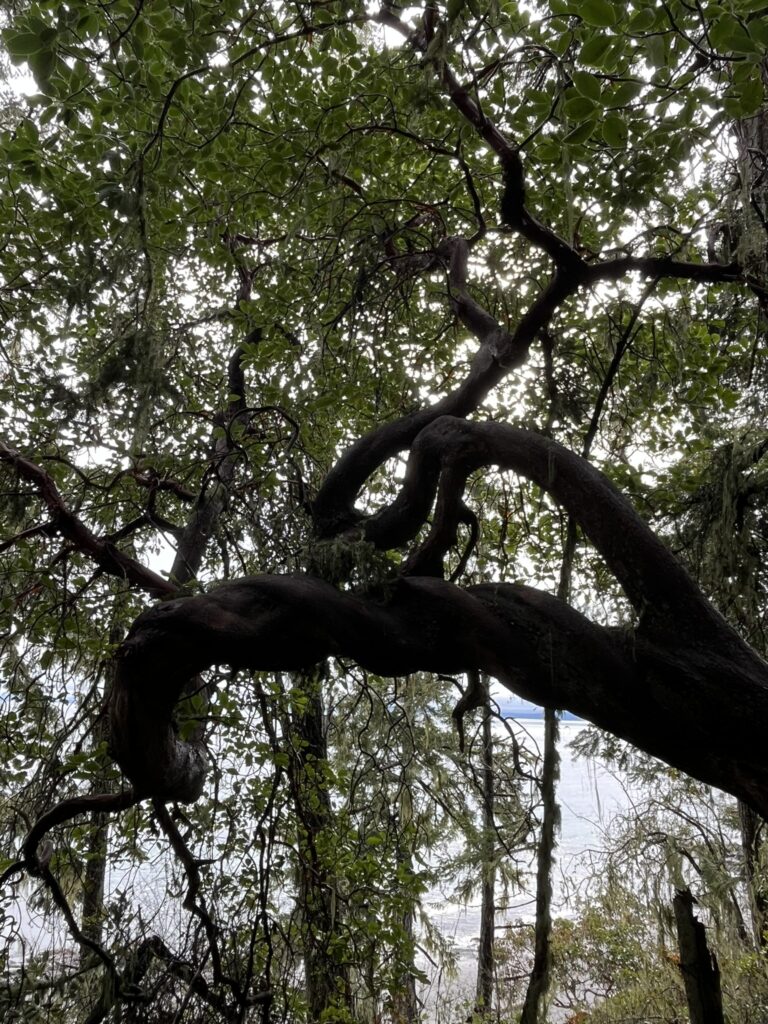
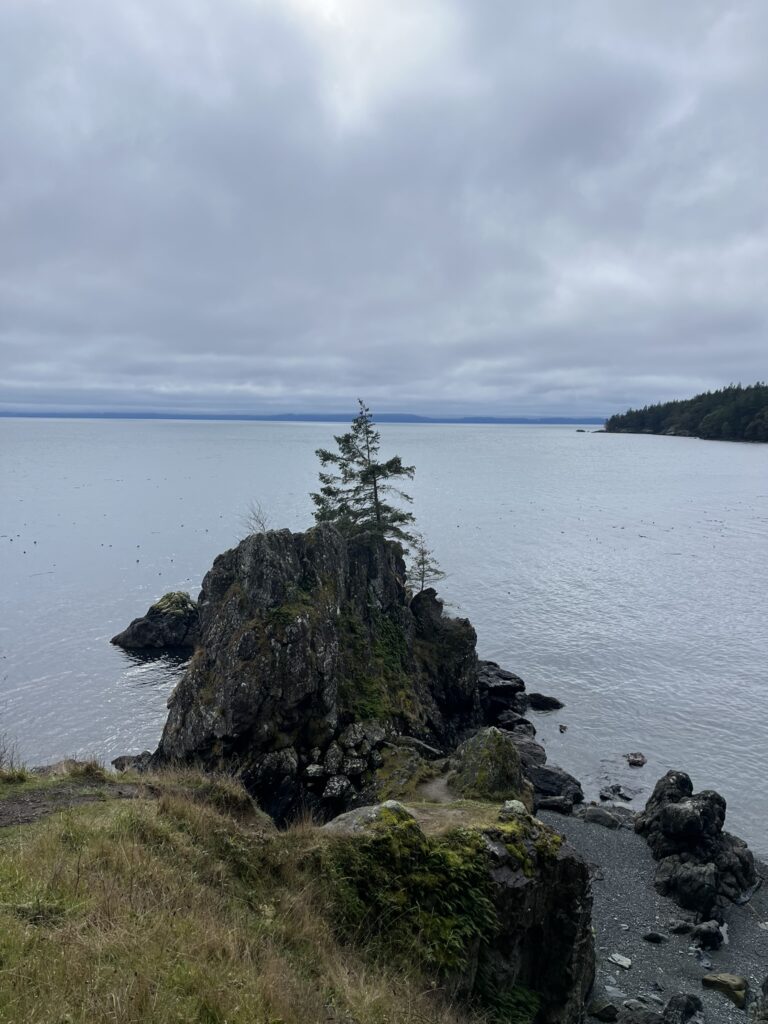
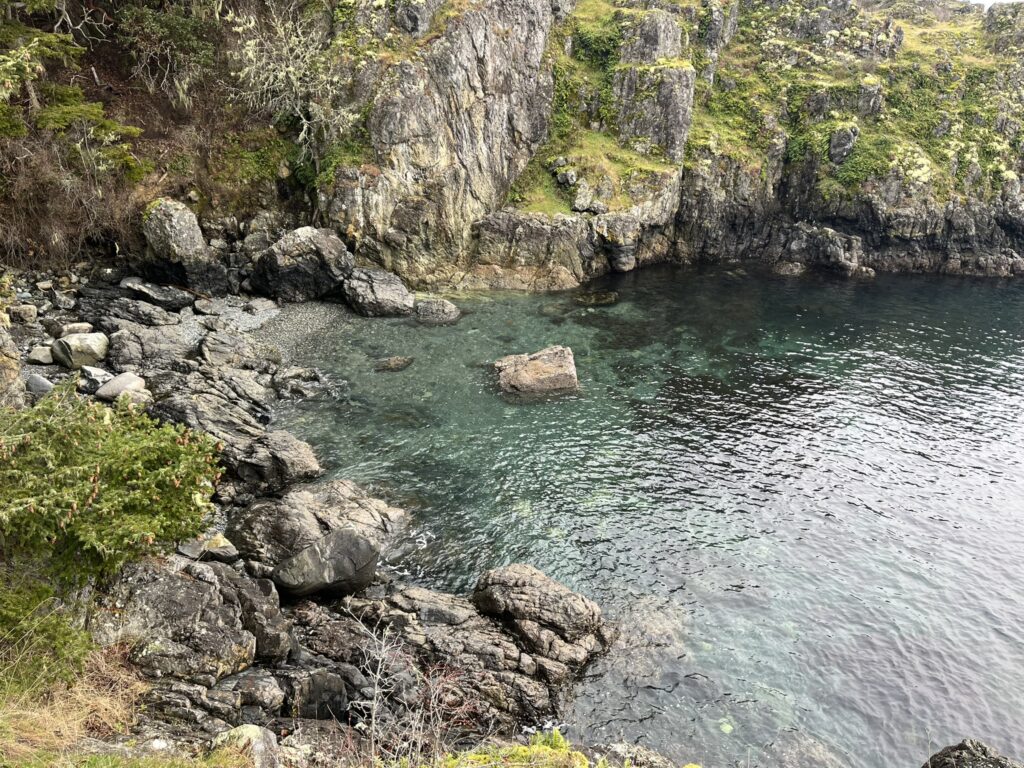
The plant of the week is Oregon Grape, also known as SENI,IȽĆ for the plant and SENI for the berries. The Oregon Grape is easy to identify due to shiny leaves that have sharp teeth. The branches are usually red/brown. It is not currently flowering nor producing many berries, although that should start fairly soon. The yellow flowers grow in clusters and will be close to the dusty blue berries that look similar to a grape but smaller. They are found in dry forests and rocky outcrops.
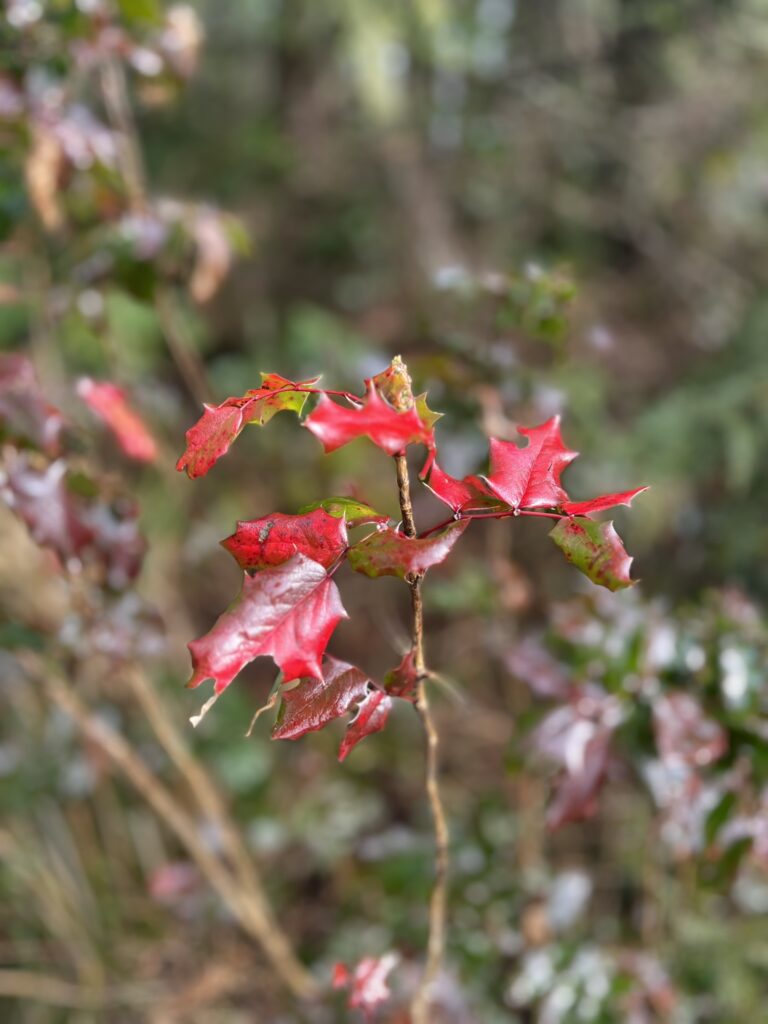
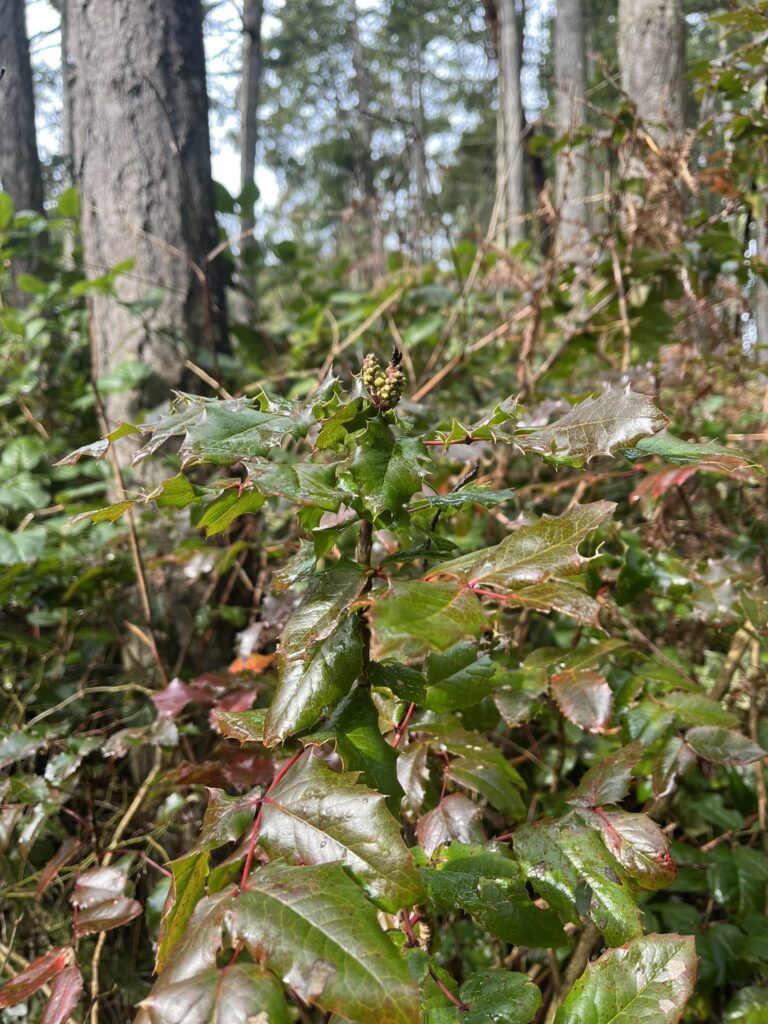
There are many uses for the Oregon Grape plant. This paragraph will discuss its culinary uses such as harvesting their berries in early summer to early fall. You can use the berries to sweeten jams or pie fillings. Oregon Grape plants can be used to make different dyes for clothing and such. Their berries can be used to make purple dye and their roots (shredded) and inner bark of the stem can be used to make yellow dye.
The Oregon Grape has many medicinal uses as well. Traditionally, some Indigenous nations have used the berries to treat poisonings such as paralytic shellfish. You would eat the berries from the earliest symptoms until your symptoms go away. To aide with digestive problems, the root can be made into a bitter tea to ease digestive problems. One medicinal use I find particularly fascinating is that you can use the tea from the bark of the main stem or roots of plants that have a single red leaf on the stem to make a tea that helps with elevated blood sugar. Although you might end up with a yellow tone on your skin for a short while.
Here is a recipe for Oregon Grape Jelly that I found online and will be making once they are in bloom.
Oregon Grape Jelly (makes 6 half pints)
3-5 lbs of washed, stemmed Oregon grapes (this is roughly equal to about 2 quarts of berries)
3 cups of water
5 cups of sugar
1 pkg of liquid pectin
Crush the grapes and add the water. I use a hand blender on low. Do not over mix, or it may alter the natural pectin in the fruit, making it frothy. Boil for 10 minutes, mashing the berries a bit. Place the mixture in a colander lined with cheesecloth. Let this drain a few hours, or until you have about 4 cups of juice. Discard the debris and cheesecloth. Mix the juice with the sugar and bring to a rapid boil. Add the pectin. Return to a full boil for one minute. Place into warm sterilized jars, place the lids on, and put the jars into a boiling water bath for 10 minutes Remove the jars from the water and let set overnight.
This week I went on a walk at Tod inlet or SṈIDȻEȽ in SENĆOŦEN. This inlet has a lot of history for the local W̱SÁNEĆ people. SṈIDȻEȽ means home of the Blue Grouse. SṈIDȻEȽ was a traditional village site for the W̱SÁNEĆ people until the Hudson’s Bay colonized it in 1859. A cement company was built there and polluted the shores, leaving this once fertile land barren. Through restoration work SṈIDȻEȽ has come slowly back to life. However, the work is not yet done. The abundance of jellyfish in these waters is a tell-tale sign that everything is not fully restored. There are hundreds of mesmerizing Moon jellyfish at SṈIDȻEȽ. Moon jellyfish thrive in low oxygen environments, and they are eating all the plankton in the inlet, meaning that the small fish don’t have as much to eat.

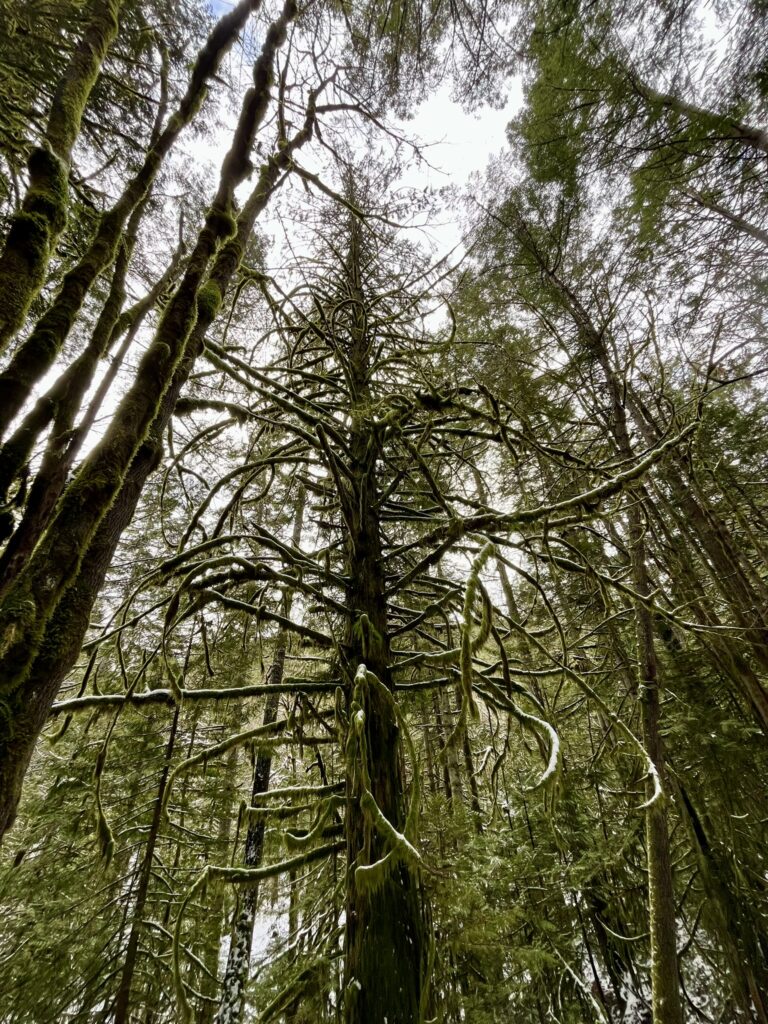
The particular indigenous plant that I will be discussing this week is the Snowberry. The snowberry has multiple traditional uses. To treat swimmers itch, scrape snowberry back and put it in a bath to treat swimmers itch. Use the berries in a hot bath to help treat impetigo. Another way to use it medicinally is to apply a salve of berries and bark to help treat nerve damage. You must apply this salve daily to treat paralysis from strokes. Snowberries can also be used for severe burns. Lastly, a non-medicinal way to use the stripped stems of the snowberry bush is to tie them together to use as a broom!
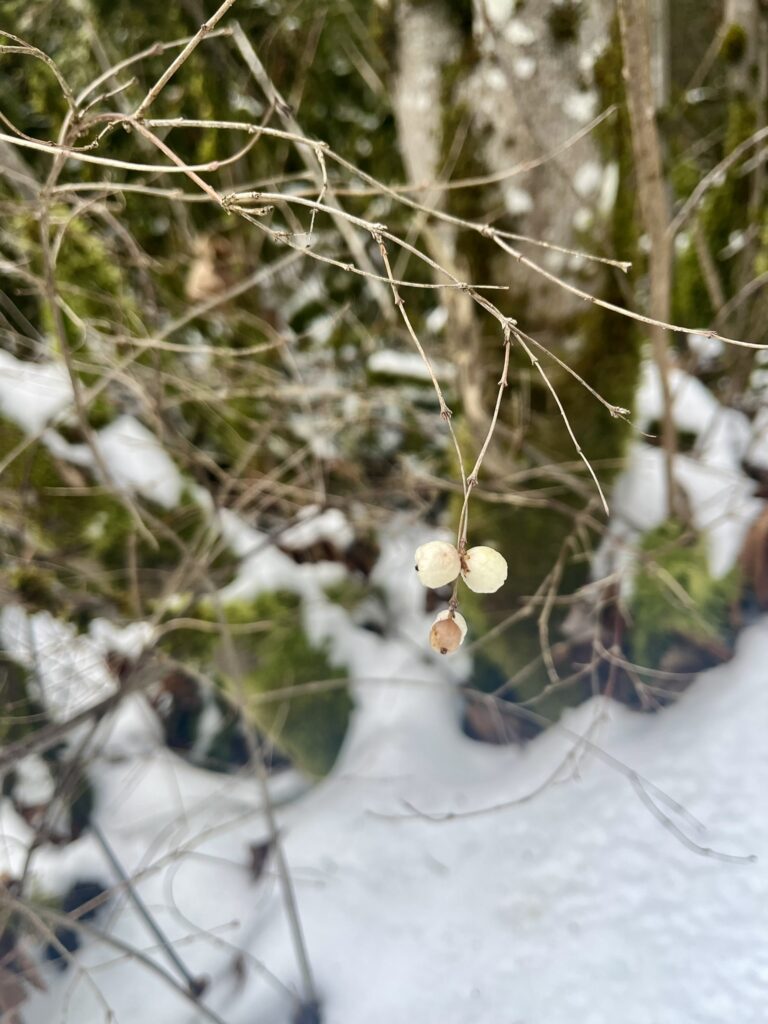
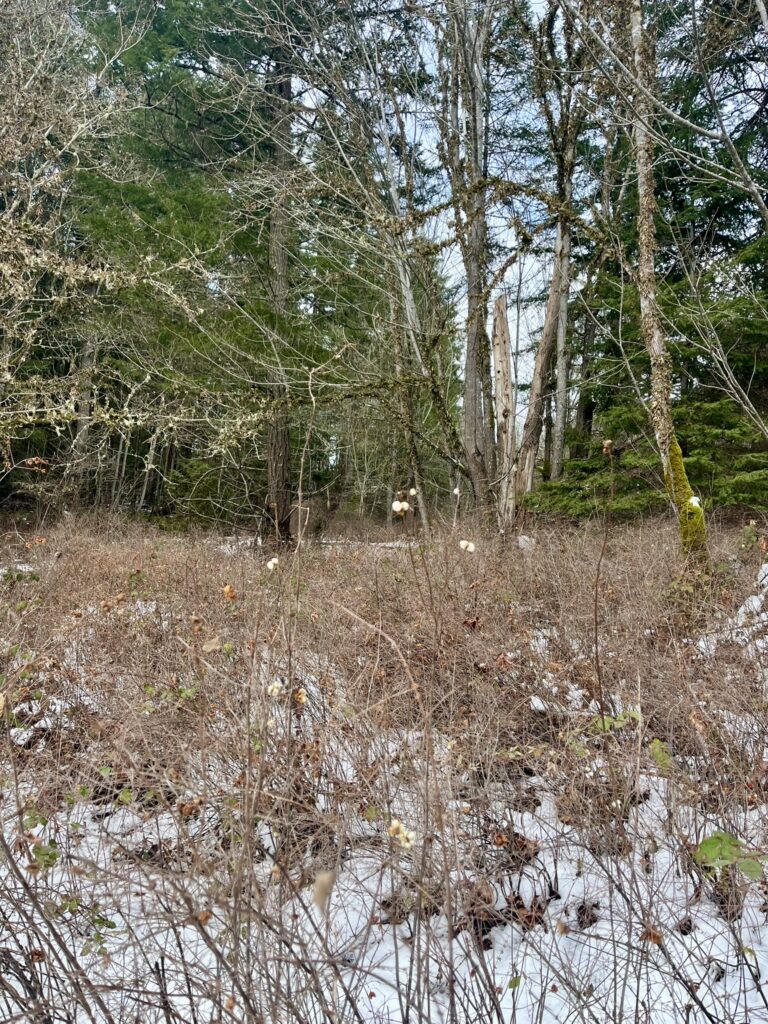
The snowberry is a branching shrub that is easily identified by its white berries that can be found for most of the year. Its bark is reddish brown. When it flowers, its flowers are bell shaped in dense clusters. The white berries are pea sized and have a waxy texture. Do not eat the berries, they are poisonous.
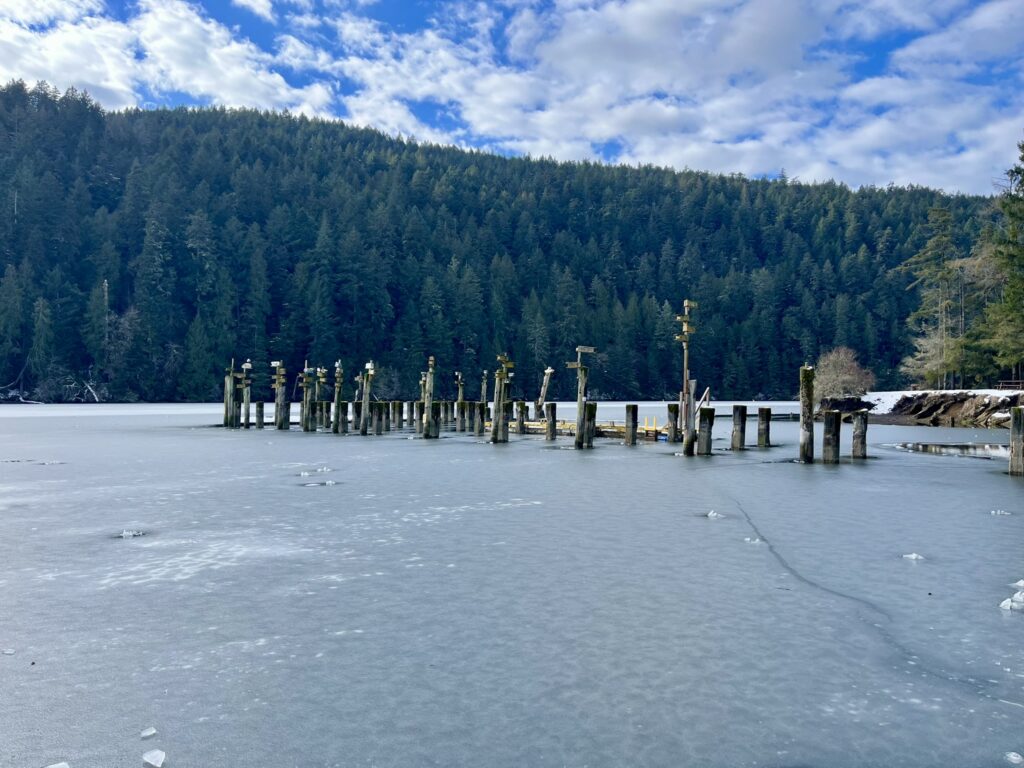

For this week’s nature walk, I went for a walk at Mount Work, the Munn road entrance. The freshly fallen snow made this walk even more magical than normal. This trail connects to Durrance Lake further on. I went into this walk hoping to find some snowberries as I had hoped to title this weeks blog post “Snowberries in the Snow”. Surprisingly, I did not find any. However, I did find many Salal shrubs. One fun spot you can find on this walk is Kinghorn cabin, a cabin that used to belong to the Kinghorn family until they donated it. It is a fun spot to explore! I will include a photo from inside the cabin and the outside below.
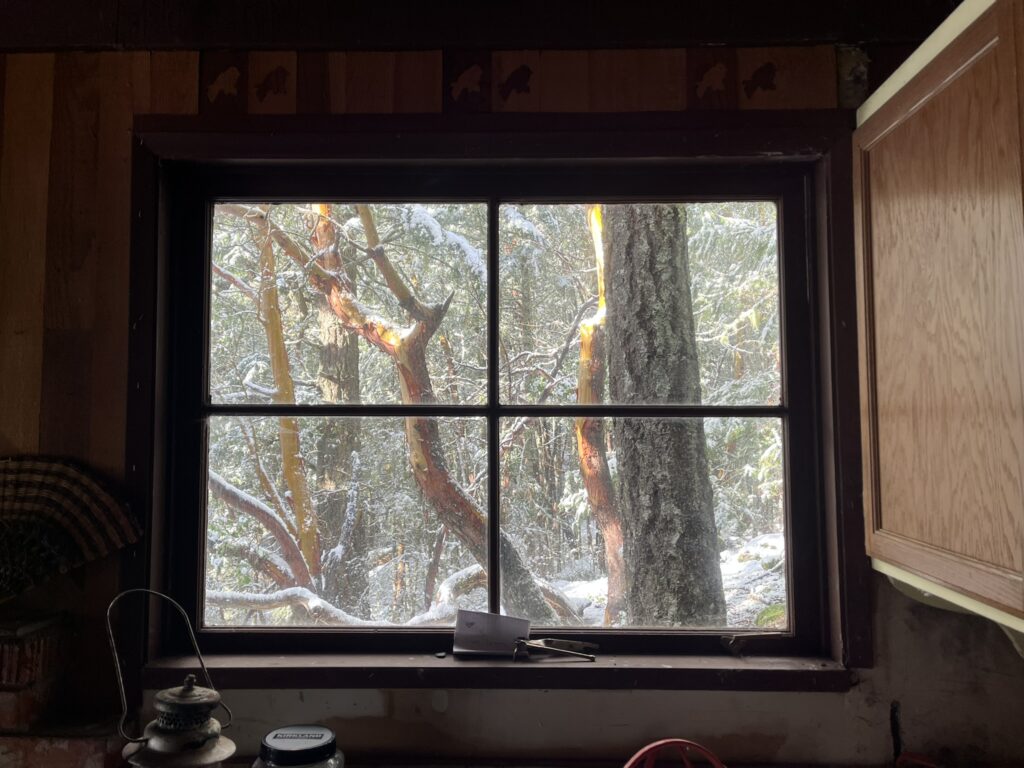
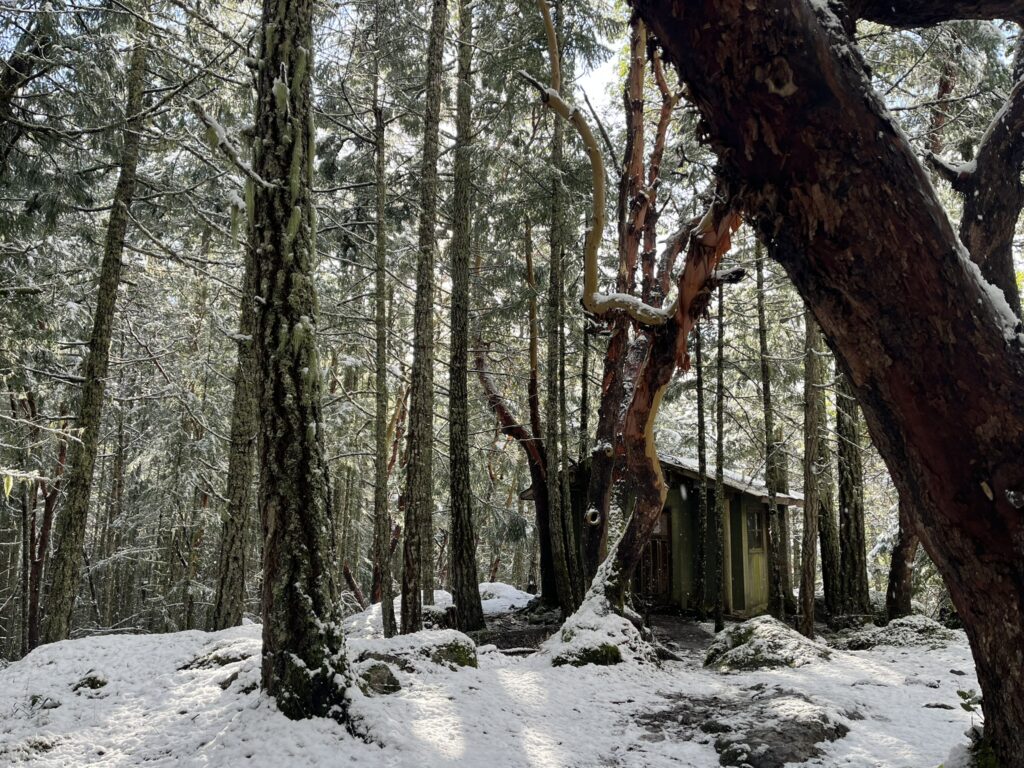
Salal, also known as DAḴE IȽĆ in SENĆOŦEN, has distinct shiny, leathery evergreen oval leaves. They have dark purple-blue berries that come out in the fall. One of the traditional uses of Salal is using the berries to either thicken other jams or make a jam just using Salal berries. Salal berries can also be dried and eaten similarly as raisins. Not only can the berries be used, but the leaves too! “Use leafy branches in pitcooks for flavour and to protect food from direct heat and soil.” (Pacific Northwest Plant Knowledge Cards). Both the new leaves and berries are excellent sources of vitamin C.
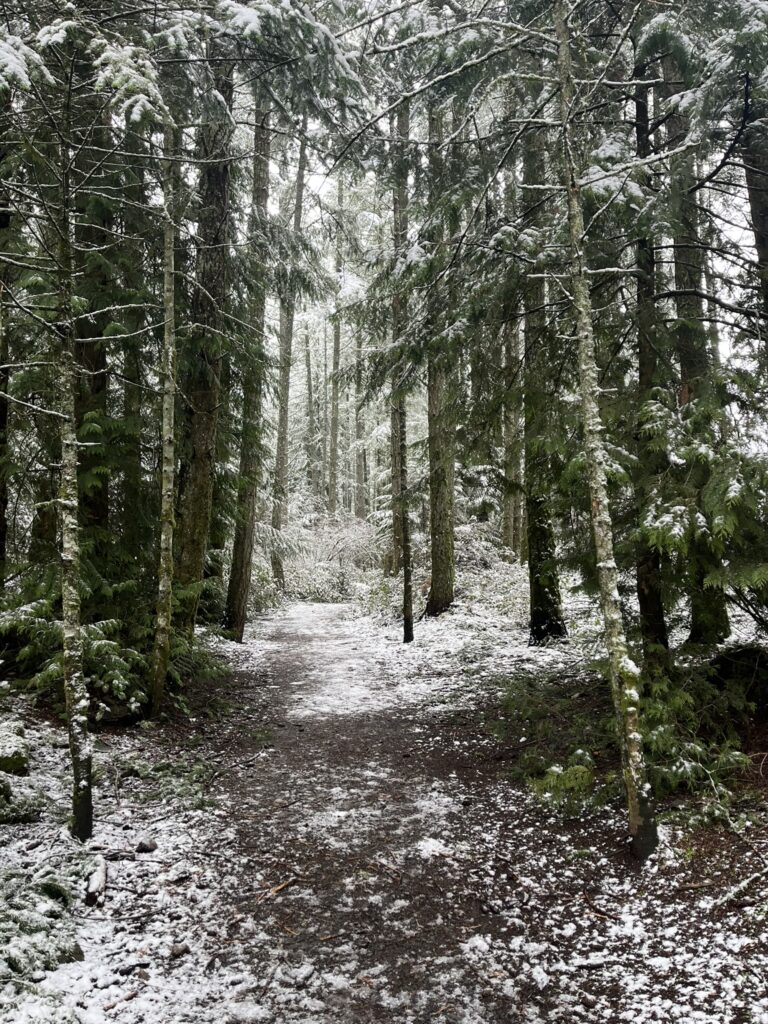
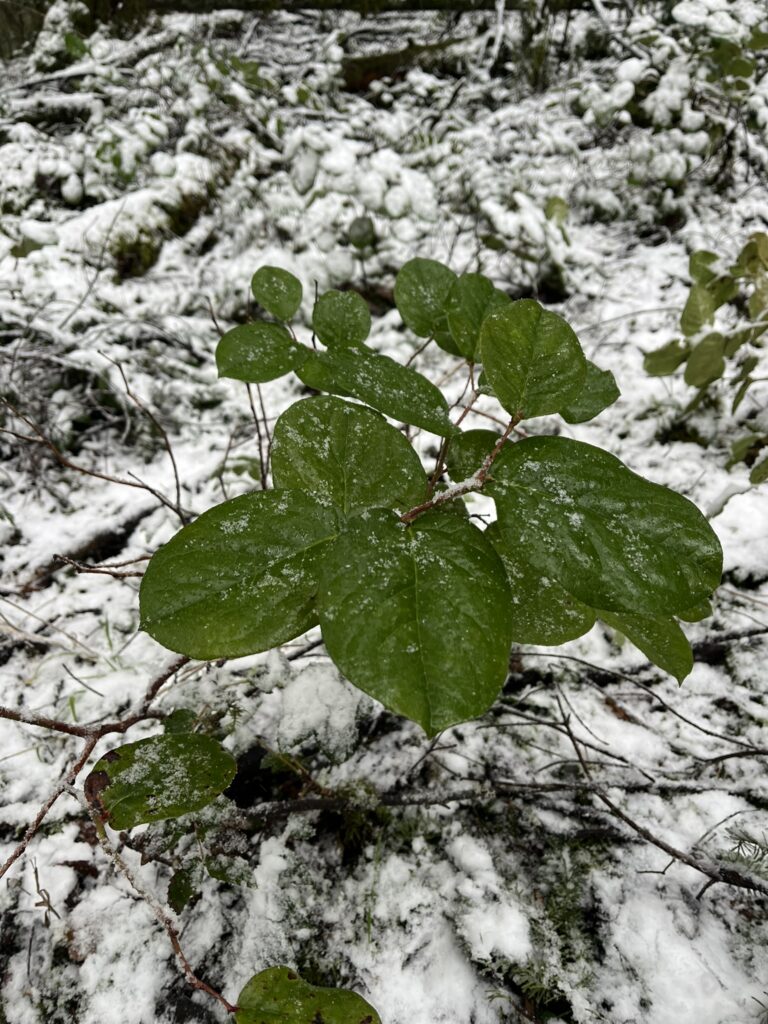
One medicinal use of Salal is chewing the leaves to suppress appetite. As well as rubbing new flower buds together and then applying to the skin to make the skin softer. I have attached a video that demonstrates how to identify Salal berries and a recipe for Pemmican.
This week I went for a walk at Swan Lake. “Swan Lake Nature Sanctuary is a charitable, non-profit organization that cares for 170 acres of wetlands and Garry oak meadow.” (Swan Lake christmas hill nature sanctuary). The nature sanctuary has a garden that features many local native plants. They have lots of resources available in the nature house and on their website. Additionally, they offer native plant workshops and native plant sales.
This photo, taken from the Swan Lake nature sanctuary website, shows the nature house where the workshops are available. The image is a hyperlink to take you to their page on native plant workshops. They teach you native plant identification and their ecological benefits among other things. Around the garden they have posted wooden signs with QR codes that tell you the name of the native plant in multiple languages including SENĆOŦEN and lək̓ʷəŋiʔnəŋ.
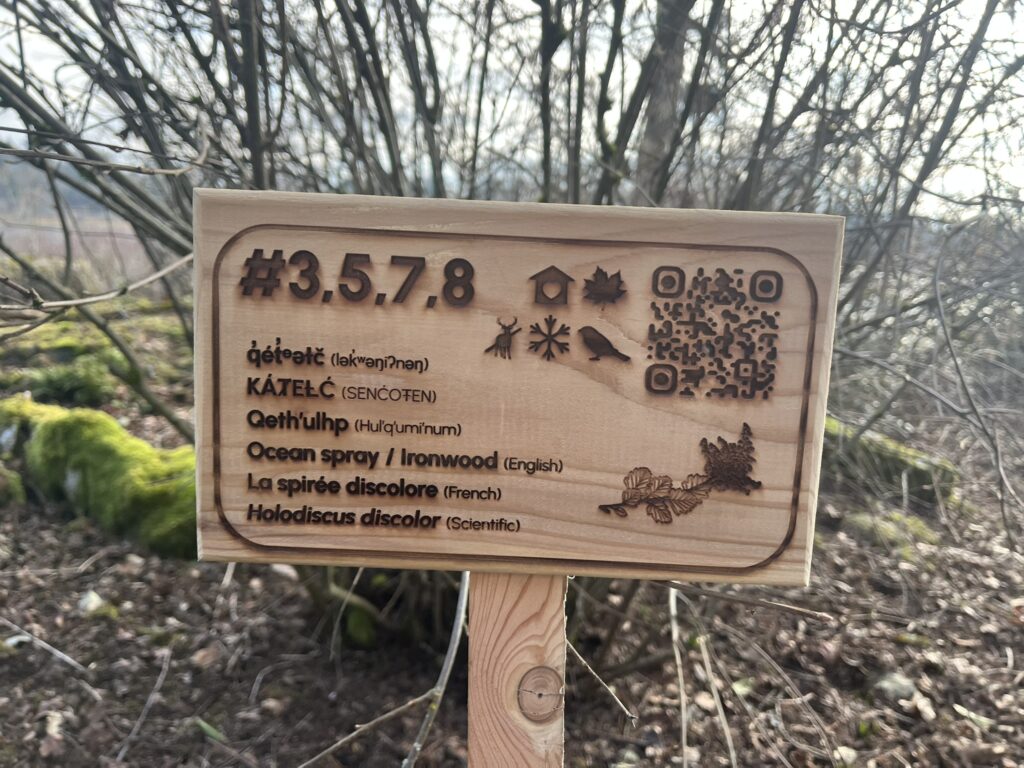
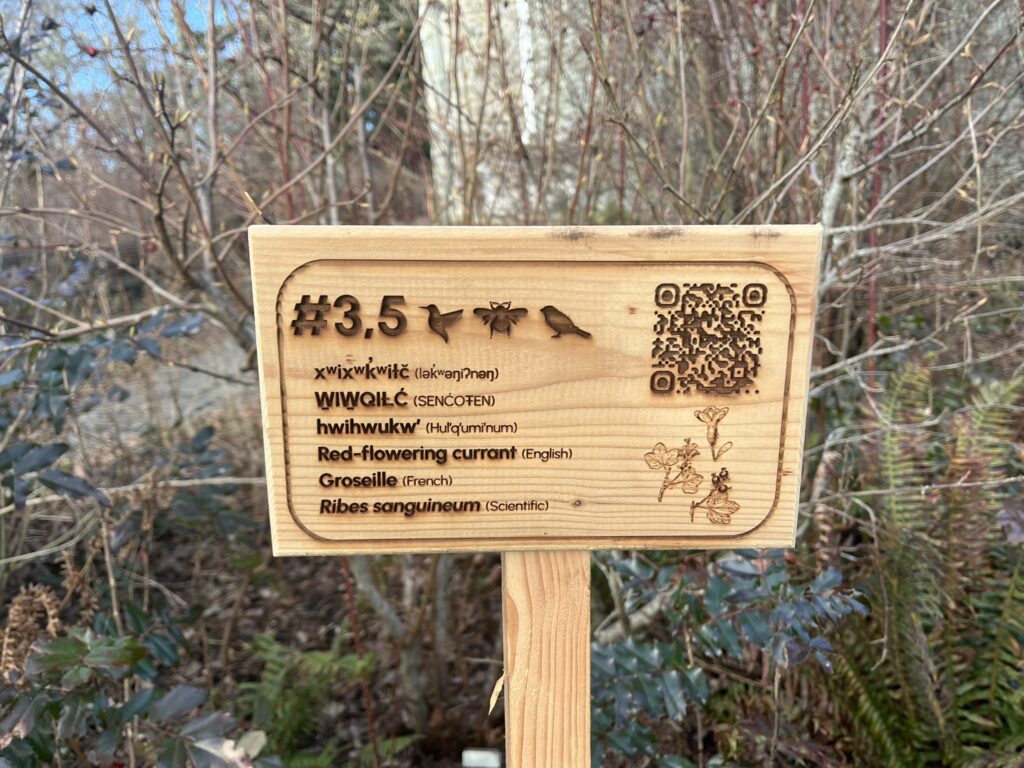
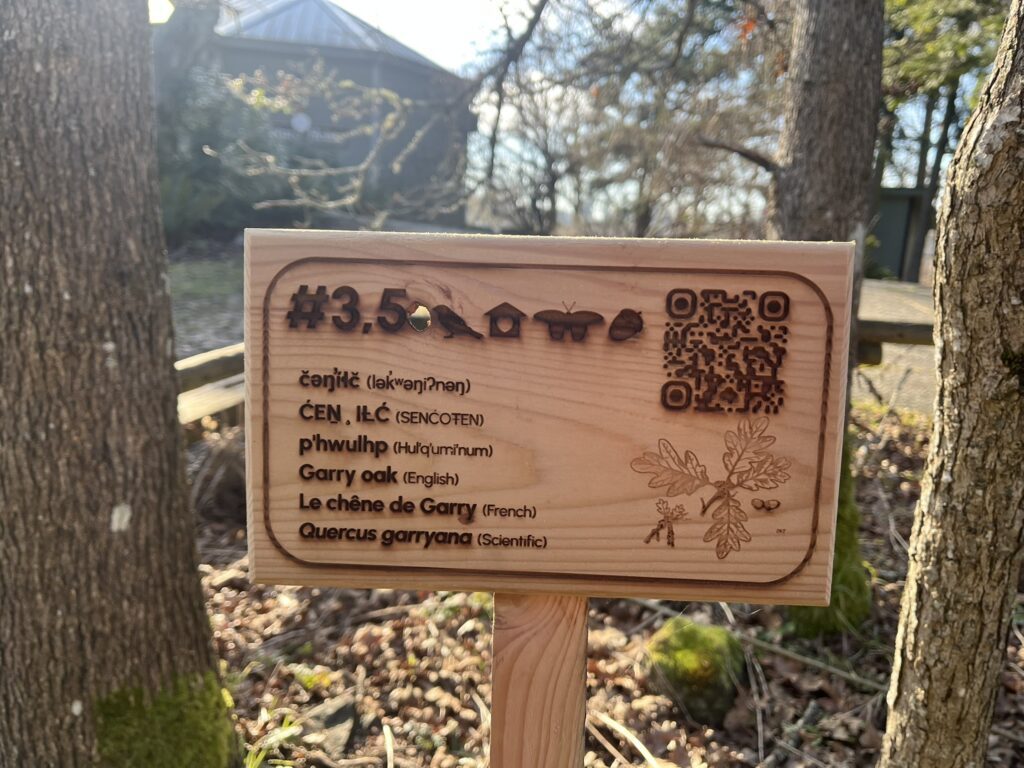
The specific plant that I will be focusing on for this blog post is the native strawberry plant! While they are not in season yet there were still some growing in the native plant garden at swan lake. There are lots of uses for these plants both medicinally and culinarily. I have a set of Pacific Northwest Plant Knowledge Cards (which I will link down below) that highlight edible and medicinal plants.
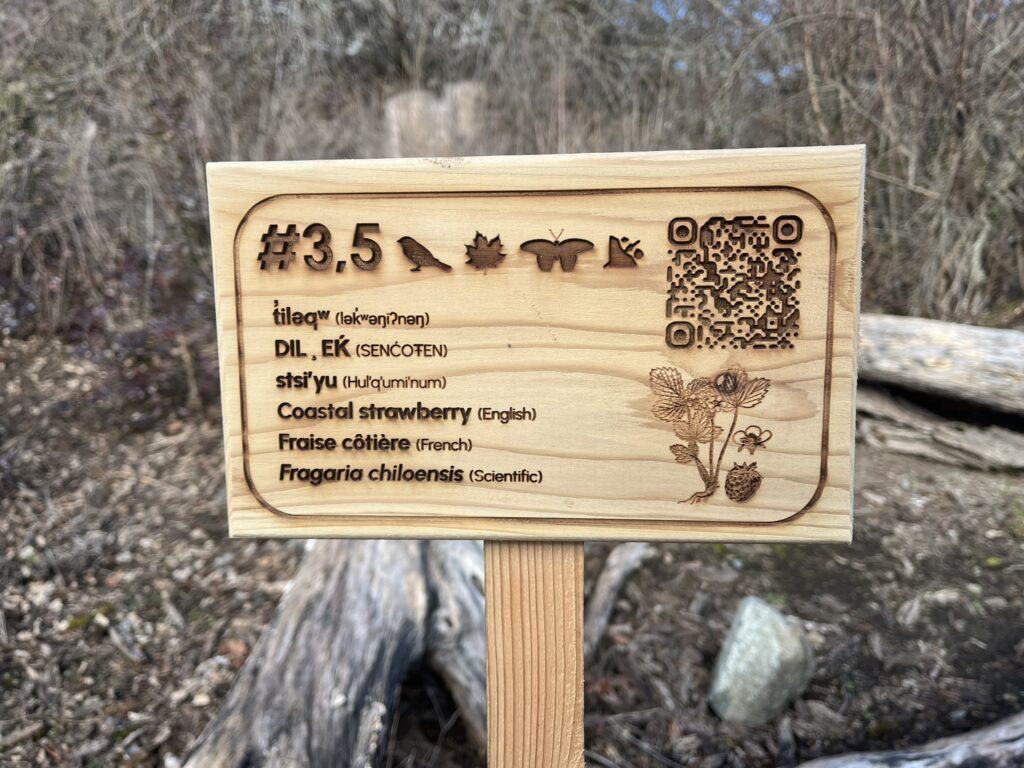
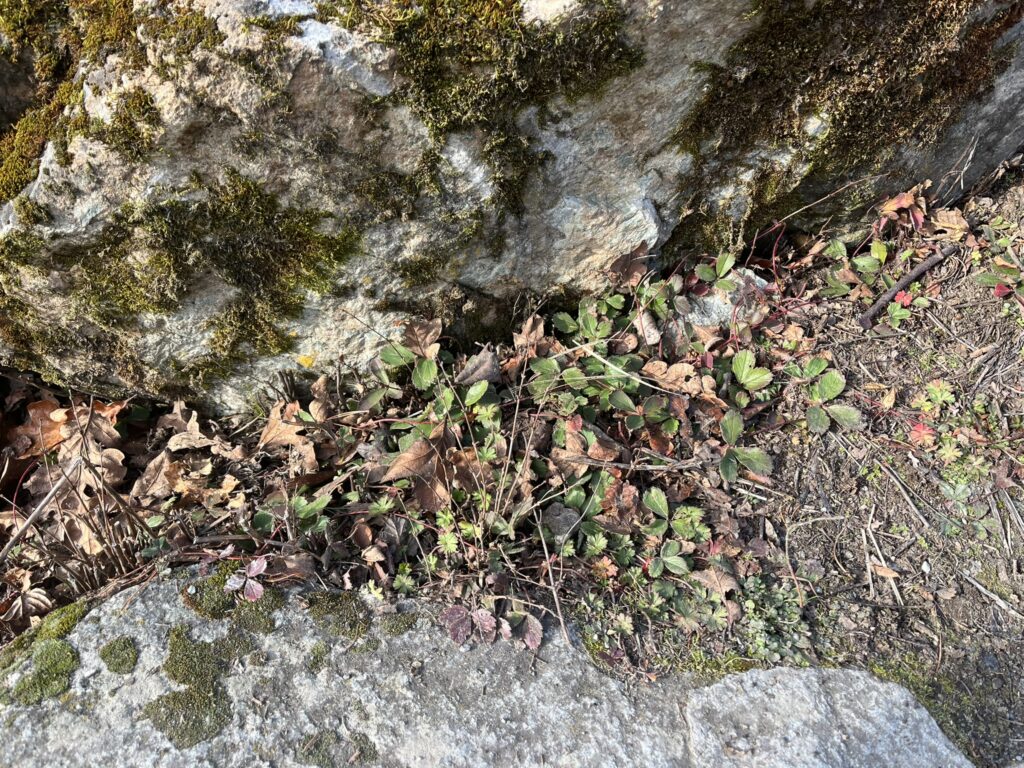
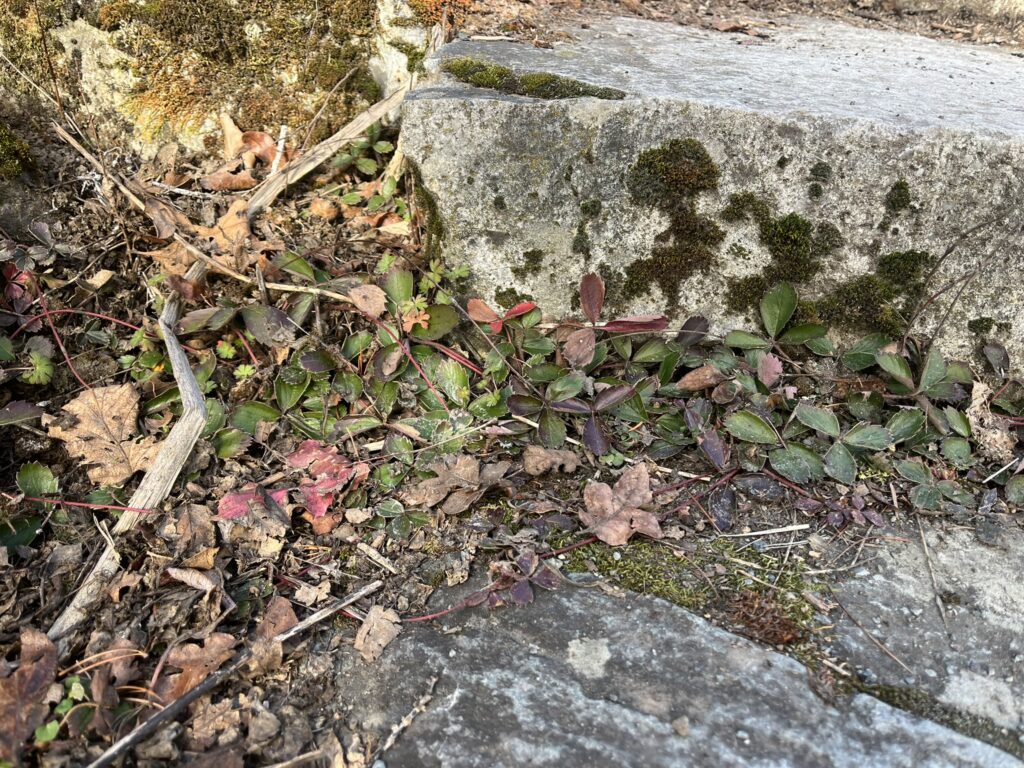
The strawberry plant card or t̕íl̕əqʷ(SENĆOŦEN), features some of its traditional uses. Indigenous people used the leaves to brew a tea that soothes sore throats. The leaves can be chewed up and put on an open sore to heal the wound. In terms of culinary usage, strawberries can be eaten off the vine or made into a jam. When confronted with wild strawberries it is important to remember the guidelines of the Honourable Harvest (Kimmerer, 2013).
This video is from the novel Braiding Sweetgrass by Robin Kimmerer (2013).
References: Kimmerer, R. W. (2013). Braiding Sweetgrass. Milkweed Editions. Swan Lake christmas hill nature sanctuary. Swan Lake Christmas Hill Nature Sanctuary. (n.d.). https://www.swanlake.bc.ca/
The image is a hyperlink to the strong nations site to purchase the cards.

For my Free Inquiry project I will be learning about local indigenous plants and how to use them in day to day life. I will be taking walks during which I will identifying some of the plants I see and whether they are in season. I will be linking related information as I learn the traditional uses of such plants, whether that be for cooking or medicinal purposes. It is important to know the plants that grow around you as well as to respect the land that you are on.
As I will be learning about plants on the unceded territory of the Lək̓ʷəŋən (Songhees and Esquimalt) and W̱SÁNEĆ peoples, I will add the Indigenous names of the plants and the traditional territory where I find them. It is important to understand that while I will include the uses of the plants that that doesn’t mean that the plants should be harvested. There are some plants that are endangered and should only be viewed and not taken. The resources that I will be referencing in my quest for Indigenous plant knowledge will be hyperlinked in the post in which they are mentioned. The video included in this post features an introduction into the Indigenous plants and their spiritual and medicinal uses.
